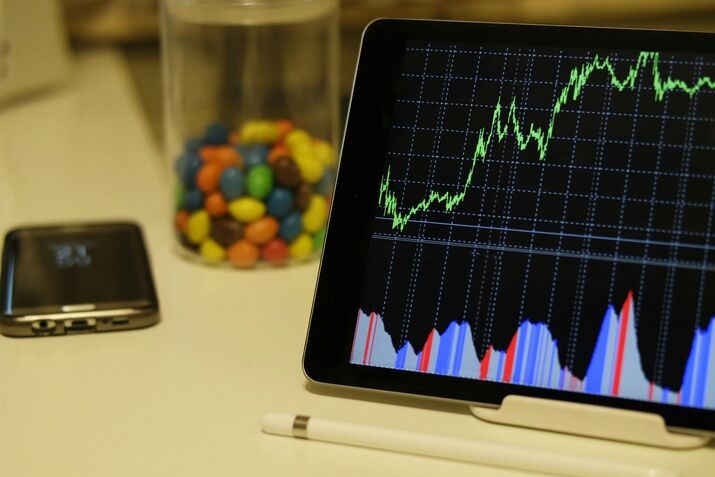If you spend a lot of time following financial news in the States, chances are you have heard the term Dow Jones quite a few times. Headlines about the Dow appear when watching CNBC, surfing through Yahoo Finance, or glancing at your investment app. However, what really is the Dow Jones, and why does it matter so much to investors in the market?
To begin with, this blog gives you everything you need to know about the Dow Jones. First, we’ll explore its history, then move on to how it’s calculated, and finally—and most importantly—we’ll explain why many investors consider it one of the most traditionally trusted stock indexes in the U.S. market.
What is the Dow Jones?
The Dow Jones Industrial Average (DJIA), also referred to as simply the Dow Jones, is among the oldest, most established stock market indexes in the world. It measures the performance of 30 blue-chip stocks, 30 large, publicly traded U. S. corporations.
Created in 1896 by Charles Dow and Edward Jones, the index was originally intended to indicate the strength of industrial companies. But, with the passage of time, the Dow has been altered and updated. It now includes companies from across virtually all sectors, including technology, healthcare, finance, and consumer goods.
Why Is the Dow Jones Important?
Many investors and economists in the U.S. view the Dow Jones as much more than just a number. They use it as a quick indicator of the broader economy’s health. When the Dow jumps, people generally associate the date with rising optimism about the economic outlook. However, on rare occasions, a falling Dow signals concerns about growth, inflation, or global events.
While the Dow tracks only 30 companies, they are leaders in their industries. Hence, the index is very often used as a reference point in the determination of market performance and investor sentiment.
Companies Included in the Dow Jones
As of 2025, the Dow Jones comprises 30 influential U. S. companies. There is merit to considering that these businesses are chosen based on their reputation, size, and their function in the economy. Here are just a few well-known names:
- Apple Inc. (AAPL)
- Microsoft Corp. (MSFT)
- The Coca-Cola Company (KO)
- Johnson & Johnson (JNJ)
- Goldman Sachs (GS)
- McDonald’s Corporation (MCD)
- Boeing (BA)
The list is never permanent; it does change from time to time to better reflect the modern economy. Should a company be underperforming or cease to represent the industry adequately, its place would then be taken by a more relevant company.
How Is the Dow Jones Calculated?
It’s important to understand how analysts compute the Dow Jones, especially when comparing it to other indexes. While the S&P 500 uses market-cap weighting, the Dow relies on price weighting.
What that means is if a company has a much higher stock price than most in the index, it weighs more on the index than if it were big in market value. On the upside, a stock price of $400 has more impact on the Dow than a stock price of $100, even if the $100 stock belongs to a huge company.
This is something that has elicited some criticism, with many analysts considering it outdated. However, it is precisely this factor that gives the Dow Jones much of its unique and historical significance.
Dow Jones vs. S&P 500: Key Differences
Although both indices are widely followed, they differ in several key ways:
| Feature | Dow Jones | S&P 500 |
|---|---|---|
| Number of Stocks | 30 | 500 |
| Weighting Method | Price-weighted | Market-cap weighted |
| Sector Coverage | Diverse but selective | Broad across all sectors |
| Launch Year | 1896 | 1957 |
| Purpose | Snapshot of blue-chip firms | Broad market benchmark |
Because of its limited size, the Dow Jones provides a more focused view of established companies, while the S&P 500 offers a wider look at the market as a whole.
How to Invest in the Dow Jones
It is impossible to invest directly in the Dow Jones, but one can easily gain exposure to it via a variety of investment vehicles.
- ETFs That Track the Dow
One prominent option, for instance, is an investment in the SPDR Dow Jones Industrial Average ETF, or DIA. This ETF directly tracks the index, and as a result, with a single trade, you can gain exposure to all 30 Dow components.
- Dow-Based Mutual Funds
Some mutual fund companies set up funds to either replicate or closely follow Dow performance. They may manage these funds actively or passively.
- Buying Individual Dow Stocks
If you want control, you may invest in individual companies in the Dow. On the flip side, this requires lots of research, telling time, and some money.

What Are the Factors Helping the Dow?
Several factors can move the Dow Jones up or down. Understanding these helps investors make better decisions:
- Economic Reports-The markets move depending on job data, GDP, inflation numbers, and consumer spending.
- Earnings Report-Good or bad earnings of companies in the Dow can have a considerable impact on the index.
- Federal Reserve-An interest rate change and other announcements by the Fed do affect the sentiment.
- World Events-War, pandemics, and trade struggles usually cause short-term volatility.
- Market Sentiment-Every day market movement is also influenced by feelings of fear and greed.
- Since the Dow is price-weighted, a few high-priced stocks can disproportionately influence its value. Hence, it is wise to look at the overall market as well.
Dow Jones Historical Performance
The Dow Jones has been recording enormous growth in the long term for several decades. For instance, in 1985, the Dow was under 1,500 points; however, in the present day (2025), it has gone way past 40,000.
The Dow, however, has moved on to new highs post the interruptions in 2008 because of the financial crisis and the COVID developments, and such strong upward trends are just a major reason for many investors to use it as their benchmark in deciding on performance.
Why U. S. Investors Should Follow the Dow
There are reasons for U. S. investors to watch the Dow very closely:
- Investor Confidence Is Reflected in This Index- The Dow moves according to how investors feel about the economy.
- To Benchmark Your Portfolio Performance- It lets you compare the returns of your stocks against those of the Dow.
- Insight into the Economy- Its movement reflects economic trends because it carries major U. S. companies.
- Educational Value- Learning how the Dow works will enhance your knowledge and understanding of financial markets.
Final Thoughts
The Dow Jones is much more than a number displayed post-trading hours; it is a potent indicator of how the country’s most established companies are faring, which translates to the economy at large.
For the beginner investor and the more experienced one alike, keeping up with the moves of the Dow will ensure one stays informed and is able to plan their strategies and growth better.
So the next time you hear someone say, “The Dow is up 200 points,” you will be fully aware of what this means and why it is of concern to you.
